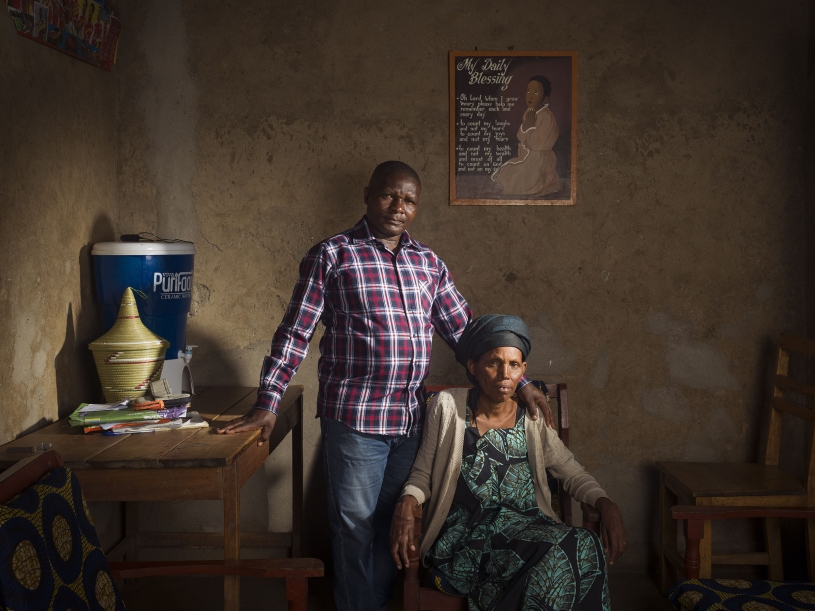

Healing Wounds: Reconciliation in Post-Genocide Rwanda. Rose Mukarusagara (60) lost her two eldest children and almost her entire family during the genocide. On April 10, 1994, a group, including Ezechiel Niyibizi (46), attacked her, killed her baby, her sister-in-law, and left Rose severely injured. Her right hand still shows the scars.
In 2014, Rose joined CBS Rwanda’s socio-therapy, seeking healing. During the sessions, Ezechiel apologized for killing her baby, and eventually, she forgave him.
Healing Wounds: Reconciliation in Post-Genocide Rwanda
Photographer: Jan Banning
Exhibit Title: Healing Wounds: Reconciliation in Post-Genocide Rwanda
Location: Rwanda
Thirty years after the 1994 Rwandan genocide, remarkable partnerships have emerged: survivors reconciling with those who killed their loved ones—a profound journey toward healing.
During the genocide, 800,000 people were killed in 100 days, often by neighbors using crude weapons. Survivors bear deep scars, while perpetrators wrestle with guilt. Photographer Jan Banning and writer Dick Wittenberg spent a month meeting pairs of former enemies who reconciled, revealing stories of immense suffering and forgiveness.
Over 20% of Rwandans face trauma, with rates exceeding 50% among survivors. To address this, CBS Rwanda introduced a community-based sociotherapy program in 2005. More than 64,000 participants, supported by 1,000 trained volunteers, engage in sessions blending safety, care, and storytelling. Singing, dancing, and shared narratives foster trust and empathy.
Many perpetrators express remorse, and 80% of groups continue meeting, maintaining transformative bonds and rekindling friendships.While the scars of genocide remain, Rwanda demonstrates that even the most divided societies can begin to heal.
Dick Wittenberg (text).
Jan Banning is an independent Dutch photographic artist with Dutch East Indies roots. He studied social and economic history. With his book and exhibition Bureaucratics (2008), he gained worldwide recognition. He specializes in documentary series, i.a. Bureaucratics, Comfort Women (2010), Red Utopia (2017), The Verdict: There Christina Boyer Case'(2022), and his latest "Healing Wounds: Reconciliation in Post-Genocide Rwanda.
His work reflects his academic study, focusing on ‘structural,’ socio-political themes. Sometimes, it involves sociological or anthropological classification; at other times, it explores the individual psychological impact of major social events. His roots are evident in projects such as Comfort Women(depicting WWII sex slaves for the Japanese army) and Traces of War (about WWII slave laborers in Southeast Asia).
Banning occasionally describes himself as an ‘artivist,’ not satisfied with merely visualizing themes through documentary work but also striving to bring about change using both his work and his reputation, as exemplified in the case of The Verdict.
His work is held in prominent museum collections, including the High Museum of Art in Atlanta, the Museum of Fine Arts Houston, the Philadelphia Museum of Art and the Rijksmuseum in Amsterdam.
His work has been published in more than a dozen photobooks, and by media such as The Guardian Weekend, Le Monde Magazine, Geo Germany, Internazionale, De Standaard, De Volkskrant.
CBS Rwanda
Jan Banning
Begoniastraat 23
3551BJ Utrecht
Netherlands
www.janbanning.com
+31 651 365 983
Instagram: janbanning
www.facebook.com/jpcbanning/
Make Comment/View Comments